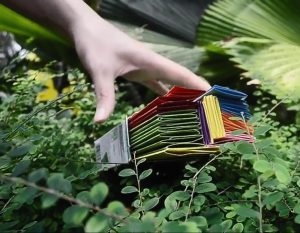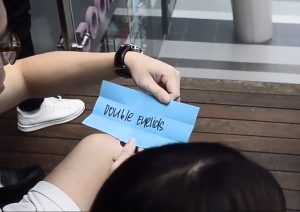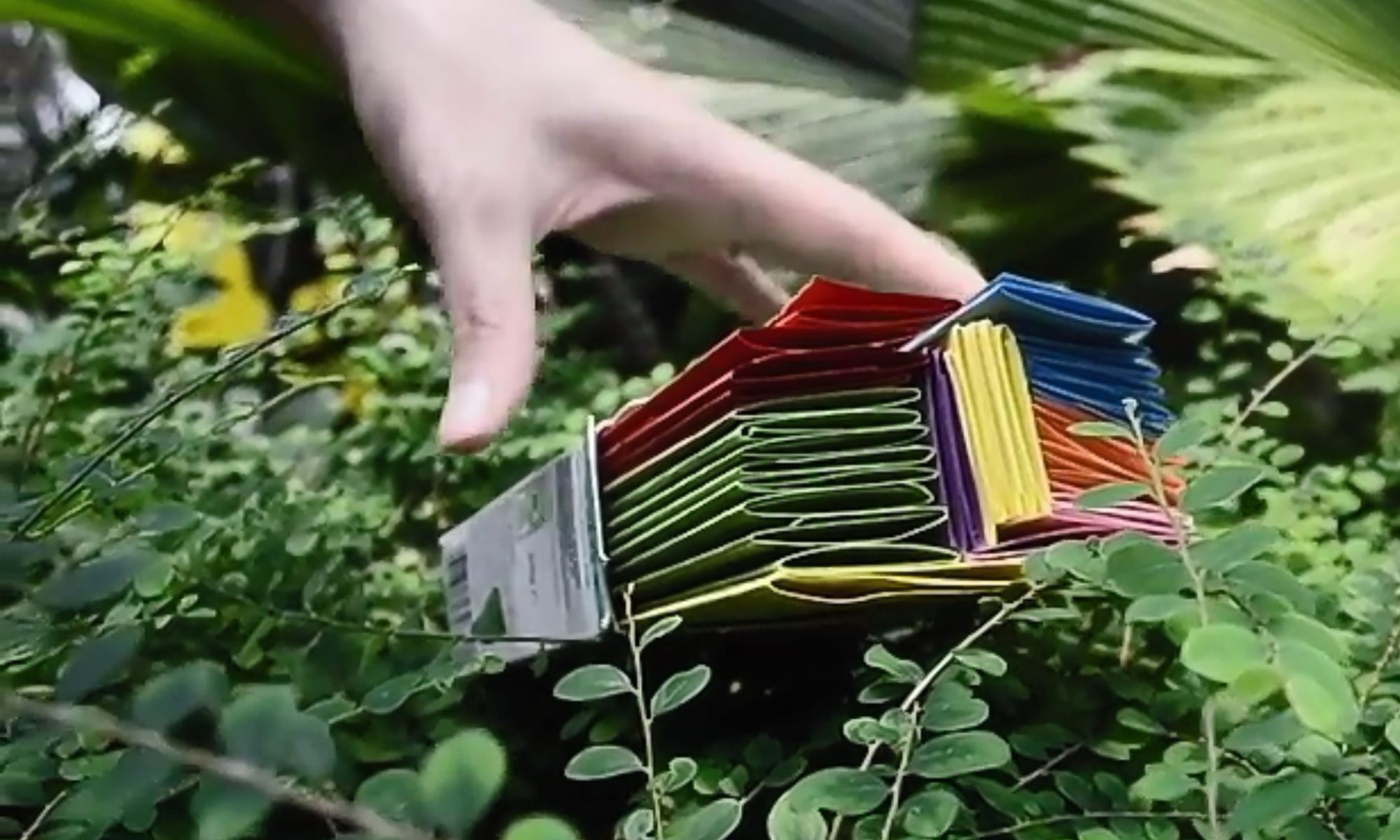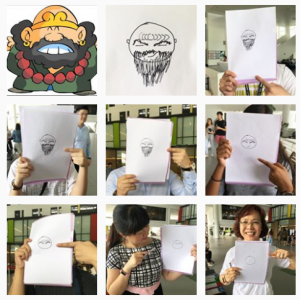The Final Project
For our final project for Experimental interaction we are asked to create a social project that will allow us to interact with others. We formed small groups and began brainstorming what we could do for the interaction portion. Mostly our project revolves around ‘playing games’ with strangers that we meet on the streets, in a way to see how willing people are to interact with other strangers. The end result is ‘Play Stranger Things’.
Play Stranger Things
‘Play Stranger Things’ is a collaborative art piece where strangers become the artist and is tasked to draw a human face. The only catch is that each stranger can only draw a single feature of the human face, and each feature is dictated by the coloured sheet that they draw from our ‘box of features’.

The point of the game is to get as many people to play as possible, and document the developement of the image on an instgram page, @letsplaystrangerthings (https://www.instagram.com/letsplaystrangerthings/). Also each time we are rejected by a stranger we record it in the form of a black screen, indicating a glitch our collaborative work which referenced Glitch art. Subsequently, the final picture is placed side by side by a character or person a stranger said it looks like.
(Screenshot taken from our instagram)
(Screenshot taken from our instagram)
Creating the project
Initially, the project took the direction of drawing a well known person, for example ‘Amos Yee’. However after a quick test run, we realised that even as art students, interpreting a facial feature like ‘long curly hair’ would take form in many different ways, and the resulting image will not look exactly like the human.
Hence, we scrapped the idea of creating a known person, and researched variations of each facial features, example ‘eyes’, ‘nose’ and ‘ears’ and have someone guess who they are at the end of the drawing.
The features colour coded:
Yellow: face shape
Red: Eyebrows
Purple: Ears
Green: Hair
Pink: Mouth
Orange: Nose
Blue: Eyes
We then put them in box and went out to Northspine NTU to conduct our project.
Reviewing the project
The point of the game is as mentioned before, the test the willingness of strangers to play and interact with other strangers, and so far, most of the people we approach are quite willing to be approached and contribute to the art.

Of course there was quite a fair bit of rejection as well, and we were intimidated by how busy everyone seemed to look, and sometimes did not want to intrude in their time. We also approached a lot of groups of people after awhile, as they seem more keen to play the game with their friends. Overall the interaction seemed to be more positive when in the presence of their friends.
We also ran into a group of sponsers at the Humanties and Social sciences building, which we had a trade with. We do their survey and they played games with us.
In Conclusion
I feel that our project is like Blast Theory in the way that we let pur audience take control of the project, and we let them interpret the instructions that we give them and react in the way that they want.




I thought Play Stranger Things is a very compelling piece and was quite successful at activating the viewer as a participant and collaborator in your work. There were some details that you pointed out that helped me to better understand the work, such as the way in which you color coded the cue cards. I thought that was very effective!
I would have liked to have seen though stronger references to the class concepts, readings, artworks, and artists. You briefly mentioned Blast Theory, but without more specifics I don’t really understand how your work compares to their projects. I think the reference to Blast Theory would have been better earlier, so that you could make a stronger conclusion about your excellent piece.
I will provide notes on the video in a separate group email.
This is a very fine piece and good description, just need stronger references and more decisive conclusion that summarized the social, interactive nature of your project.